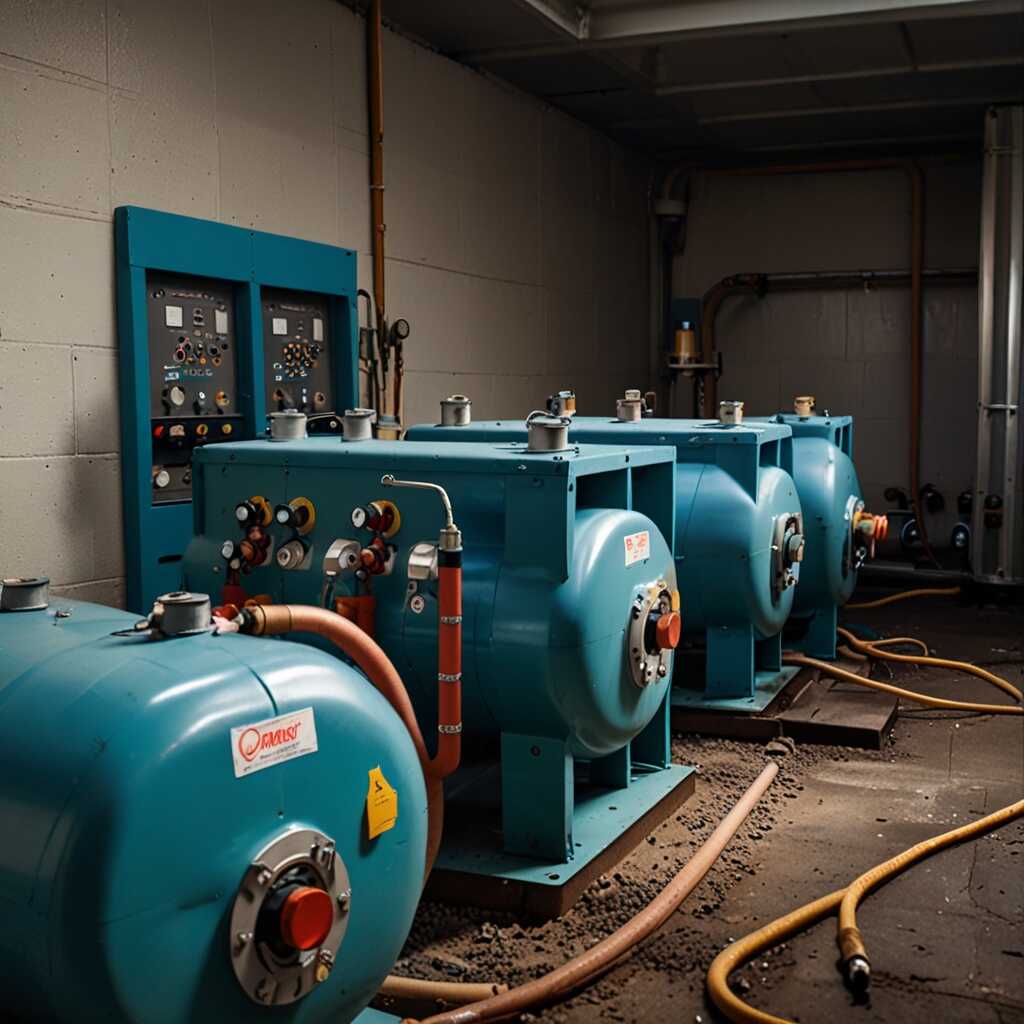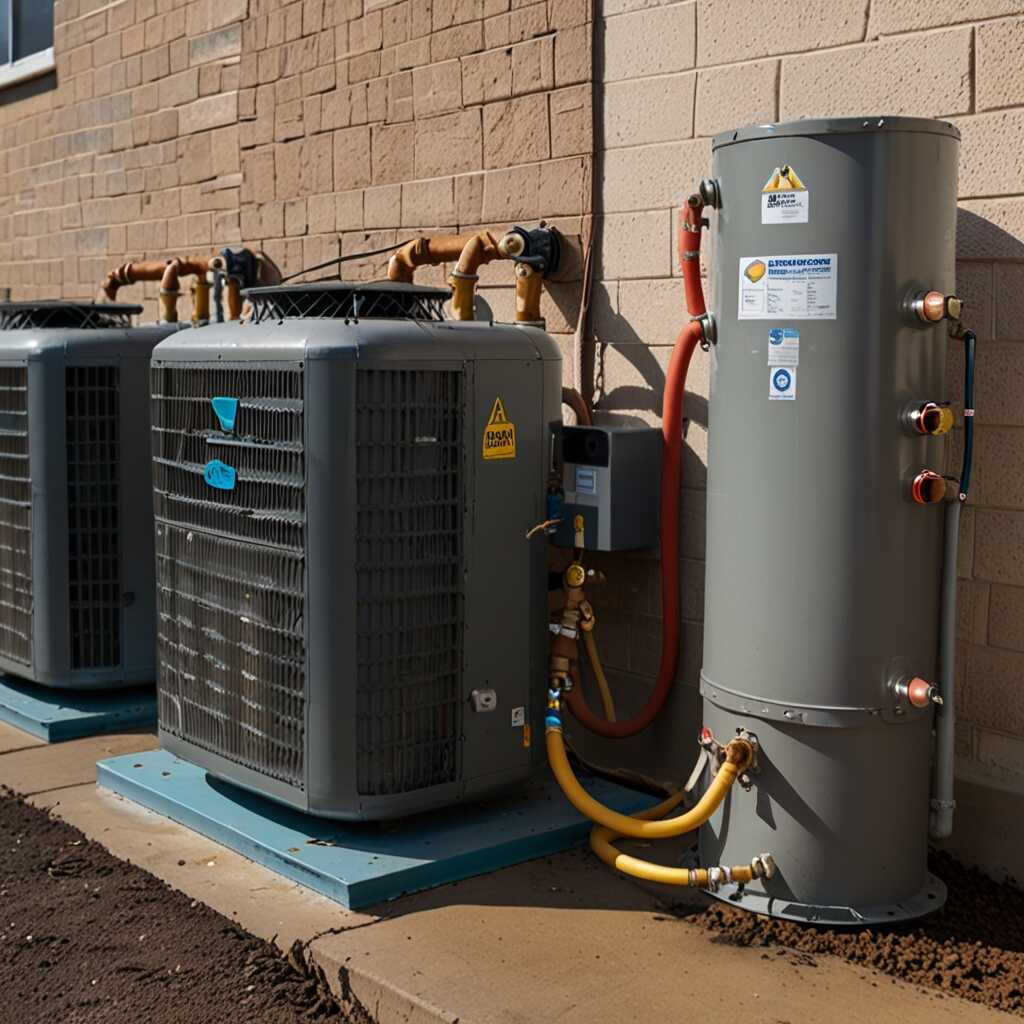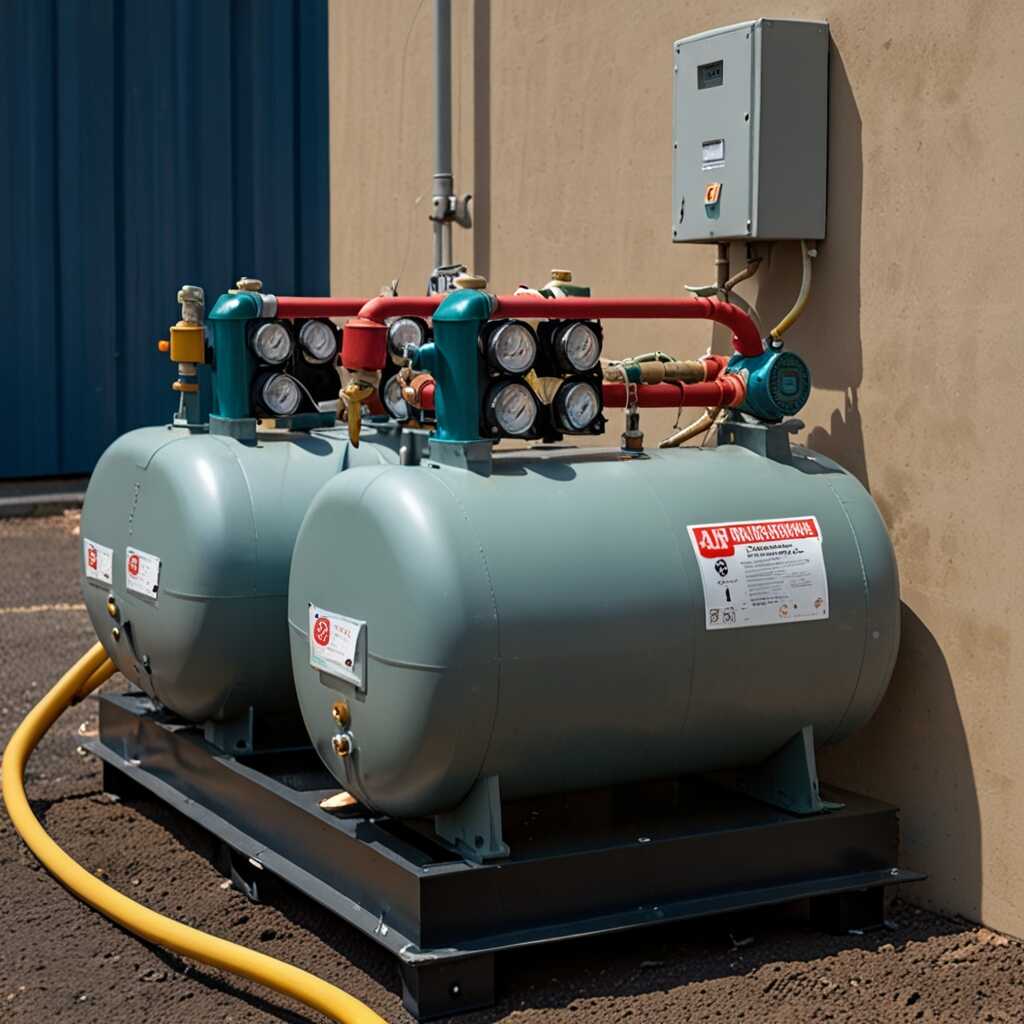The benefits of using refrigerant recovery machines with safety valves are significant for HVAC professionals. These machines enhance operational safety by preventing overpressure situations during refrigerant recovery. Refrigerant Recovery Pro emphasizes the importance of pressure relief safety valves in maintaining compliance with regulations and ensuring technician safety. Incorporating these machines not only fosters a safer working environment but also improves efficiency in refrigerant management.
Basics of Refrigerant Recovery Machines and Their Importance
Refrigerant recovery machines are essential tools in HVAC maintenance and refrigerant management. They function by safely extracting refrigerants from HVAC systems to prevent leaks into the atmosphere. These machines ensure operational safety through various features, including pressure relief valves that help manage excess pressure. There are several types of refrigerant recovery machines available in the market, including portable and fixed systems, designed for specific applications.
Key Features of Refrigerant Recovery Machines
The key features of refrigerant recovery machines greatly enhance their efficiency and safety. Many machines include built-in pressure relief valves to prevent over-pressurization, ensuring safe operation during recovery. These valves enable reliable performance and compliance with environmental regulations. Some machines also offer electronic controls, which simplify the recovery process and enhance user comfort. By providing real-time pressure readings, these features help technicians monitor system performance and make informed decisions throughout the recovery process.
Role of Pressure Relief Safety Valves in Enhancing Safety
Pressure relief safety valves are essential components of refrigerant recovery machines. They help prevent overpressure by releasing excess refrigerant when pressure exceeds the safe operating limits. This feature improves operational safety by reducing the risk of hazardous leaks or equipment failure. HVAC professionals benefit from using machines with these valves as they enhance reliability and ensure that recovery operations can be performed more efficiently.
Testing and Standards for Pressure Relief Valves
Knowing how pressure relief safety valves are tested is crucial for HVAC professionals. These valves are designed to adhere to strict industry standards, often tested to safely release at around 75 PSIs. Regular valve testing helps ensure equipment reliability. Manufacturers perform extensive research and quality checks to determine the best performing valves. This process provides data that confirms their design’s durability and efficiency. Consequently, using certified valves is pivotal in maintaining safety and performance in refrigerant recovery operations.

Key Benefits of Pressure Relief Safety Valves in Operation
Pressure relief safety valves serve essential functions in refrigerant recovery machines. They help to prevent over-pressurization, ensuring the safe operation of the system. By releasing excess pressure, these valves protect equipment and enhance overall safety. The use of reliable pressure relief safety valves improves operational efficiency by minimizing the risk of leaks and equipment failure. Many valves are designed to handle pressure capacities averaging around 400 psi, making them suitable for a variety of refrigerant recovery applications.
Understanding the Importance of Reliable Pressure Relief Safety Valves
Reliable pressure relief safety valves are crucial for the safe and efficient operation of refrigerant recovery systems. These valves are designed to activate and release excess pressure during operation, preventing potential damage or catastrophic failure. Their design ensures they can handle high-pressure situations, with many models reliably managing up to 400 psi. This capability provides peace of mind for HVAC professionals, who can focus on their task rather than worry about equipment malfunctions. Regular testing and comparison of different valves can help HVAC technicians choose the best options for their specific needs.
Key Numerical Insights about Recovery Machines and Safety Features
- Over 50% of HVAC technicians report improved safety using recovery machines with pressure relief valves.
- Studies indicate that recovery machines can reduce vented refrigerant losses by up to 90%.
- Annual savings on refrigerant costs can exceed $1,000 for technicians using efficient recovery systems.
- Operating temperature ranges for recovery machines typically fall between -40°F to 130°F.
- Pressure relief valves activate at pressures exceeding approximately 15% of the machine’s rated limits.
- Technicians trained in safety valve usage record 30% fewer accidents during recovery jobs.
- Regulatory bodies require maintenance logs for refrigerant recovery equipment every six months.

Understanding Regulatory Compliance in Refrigerant Handling
Compliance with regulations is essential for HVAC professionals using refrigerant recovery machines. The primary regulatory requirements include adherence to EPA standards, which dictate safe refrigerant handling. Professionals must ensure their machines meet specific efficiency and safety criteria. These guidelines include having safety valves, and regular testing of equipment to avoid leaks. The EPA also provides regulations for required certifications in refrigerant recovery. Technicians must document their processes and ensure proper refrigerant management systems are in place.
Importance of EPA Regulations on Refrigerant Management
EPA regulations on refrigerant management focus on minimizing environmental impact and ensuring safety in handling refrigerants. These regulations cover leak prevention and establish maximum allowable leakage percentages which are critical during recovery processes. For instance, specific thresholds apply to popular refrigerants like R-410A and R-134A. HVAC professionals must use refrigerant recovery machines designed to prevent leaks and ensure compliance with EPA standards. Additionally, regular training and documentation enhance operational efficiency and reliability when dealing with various refrigerants. Keeping up with these regulations helps HVAC companies maintain compliance while providing exceptional service.

Challenges and Solutions in Refrigerant Recovery Operations
HVAC technicians often encounter several operational challenges when using refrigerant recovery machines. Common issues include improper connections, equipment malfunctions, and regulatory compliance. Technicians can enhance their efficiency by performing regular maintenance and inspections, ensuring reliable performance. Features like built-in pressure relief valves can help prevent accidents. Keeping thorough records and using quality equipment improves troubleshooting efforts. Understanding the different refrigerant recovery machines available helps technicians select the best tool for their needs. Knowledge about these machines leads to better decision-making during operations.
Identifying and Resolving Operational Issues
When HVAC technicians face operational issues, identifying the root cause is essential. Regular testing of machine components is crucial. User-friendly designs make equipment easier to operate. Features such as digital displays provide real-time data, which is helpful in assessing performance. Technicians can also use comparison reviews to select top-performing models. Expert research on equipment options leads to informed decisions, enhancing operational reliability. Keeping up to date with industry results and performance data allows technicians to adapt and improve recovery processes effectively.
Positive Outcomes of Utilizing Refrigerant Recovery Equipment
- Enhancing safety reduces the risk of accidents and ensures technician protection during operation.
- The equipment complies with environmental regulations, promoting responsible refrigerant management.
- Recovery machines enhance job efficiency, allowing technicians to complete tasks faster.
- Consistent use of these machines avoids refrigerant leaks, contributing to reduced greenhouse gas emissions.
- Technicians can handle diverse systems easily, expanding their service capabilities.
- The machines help maintain system integrity by minimizing the risk of harmful contaminants.
- Using advanced models can improve energy efficiency in HVAC systems significantly.

Evaluating Refrigerant Recovery Machines and Their Key Features
When selecting a refrigerant recovery machine, it is essential to examine key features like pressure relief valves, performance efficiency, and overall reliability. The latest models often include pressure relief safety valves, which enhance operational safety during refrigerant recovery. Analyzing reviews and comparison data can help HVAC professionals identify the best options for their specific requirements. Most modern refrigerant recovery machines can achieve average recovery rates ranging from 0.5 to 0.8 lbs per minute, depending on the model and refrigerant type.
Key Features to Consider in Refrigerant Recovery Machines
Key features to consider when evaluating refrigerant recovery machines include reliability, efficiency, and safety mechanisms. A solid machine should incorporate pressure relief valves, which protect against over-pressurization during recovery processes. This feature is crucial for compliance with EPA regulations. Models with a proven track record generally offer better performance. Understanding the machine’s capability to handle various refrigerant types is essential for HVAC professionals seeking flexibility. Researching expert reviews provides valuable insights into the durability and performance of specific models, ensuring a good fit for any operational need.
Importance of Training for Safe Equipment Operation
Proper training is crucial for HVAC professionals operating refrigerant recovery machines for several reasons. Trained technicians enhance safety and effectiveness, minimizing risks associated with improper handling. They understand the machine’s features and how to operate them reliably. Resources include online courses, workshops, and hands-on training sessions, helping technicians stay informed about regulations and best practices. Regular updates ensure compliance with safety standards and efficient equipment operation. It is essential to check for articles and reviews on available training programs to find quality options. Experts can help explain complex topics thoroughly, providing an excellent resource for learning.
Current Training Resources for HVAC Professionals
Numerous reliable training resources exist for HVAC professionals. Online platforms offer courses specifically designed for refrigerant recovery training, covering operational safety and compliance. Many reputable organizations provide workshops and certification programs, which help technicians to achieve continuing education credits. Manufacturers of refrigerant recovery machines often provide training manuals and host webinars, highlighting best practices. Local unions and trade schools may also have training sessions. National associations sometimes offer certification updates, which ensure HVAC professionals remain knowledgeable about the latest regulations and operational techniques.
Brands and Use Cases for Refrigerant Recovery Technologies
- Brand A: Known for its user-friendly interface, suitable for beginners and apprentices.
- Brand B: Offers high-capacity machines ideal for large commercial HVAC systems.
- Frequent users include HVAC technicians who specialize in residential versus commercial systems.
- Brand C: Features advanced safety designs, notable for professionals working in high-risk environments.
- Emerging markets in developing regions increasingly adopt recovery technologies to meet regulations.
- Industry regulators prioritize technicians adopting these machines for compliance with environmental laws.
- Brand D: A budget-friendly option, perfect for freelancers starting out in HVAC work.
Emerging Trends and Innovations in Refrigerant Recovery
The latest innovations in refrigerant recovery technology include the development of smart recovery machines. These machines integrate sensors and IoT connectivity, improving operational efficiency by providing real-time data and monitoring. Enhanced safety features such as pressure relief valves and automatic shutdown mechanisms ensure safe operation. Advancements in materials and designs make these machines more durable and reliable. Research indicates that these trends can lead to a projected 50% reduction in refrigerant emissions by 2025, significantly benefiting the environment while ensuring compliance with regulations.
Key Features of Smart Recovery Machines
Smart recovery machines offer exceptional efficiency and reliability by utilizing advanced technology. They include features such as automated diagnostic systems that alert users to potential issues. This allows HVAC professionals to address problems before they escalate, ensuring top performance. These machines are designed to handle various refrigerants effectively, enhancing the recovery process. With improved filtration and processing capabilities, they can operate at a higher standard than traditional machines, ultimately delivering superior results and efficiency for HVAC operators.